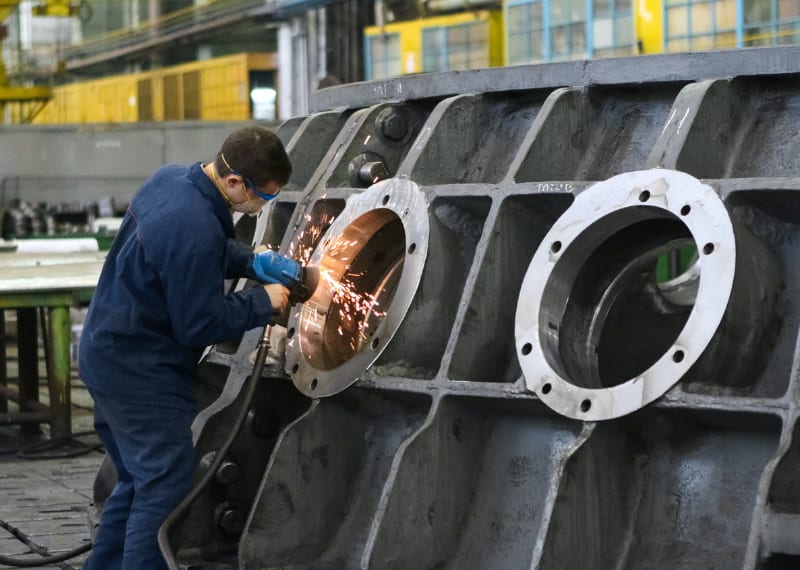20 April 2021
The fact that automation is changing the way in which business is carried out, and that those changes are set to accelerate in the future, is pretty much impossible to deny. According to Grand View Research, Inc., the global robotic process automation (RPA) market is expected to be worth as much as $10.7 billion by 2027 having experienced a compound annual growth rate (CAGR) of 33.6% since 2020. Taking RPA to mean the automation of business processes in order to deliver efficiency, streamline operations and reduce costs, analysts Deloitte, in their Global RPA Survey, predict that RPA will be adopted on an ‘almost universal’ basis in the next 5 years. At the same time they predict that this adoption could help the businesses in question to cut operational costs by as much as 30%, with those businesses which have already adopted RPA reporting the following concrete benefits:
- Improved compliance – 92%
- Improved quality and/or accuracy - 90%
- Improved productivity – 86%
The key question to ask, therefore, seems to be not so much whether a business will need to invest in RPA but exactly which form that RPA should take. At Solweb we have wide ranging experience of working with businesses of every type in order to maximise the impact of RPA and ensure that the right processes are automated and that, vitally, different processes are integrated in a way which delivers transformation across a business.
MRP Automation
If Material Requirements Planning (MRP) is automated in isolation, for example, it will offer a degree of improvement on existing manual MRP systems, but will fail to be truly transformative if the systems feeding in and out of it still suffer from the slow pace and avoidable mistakes synonymous with repetitive manual inputting. Our experience has taught us that automation is at its most effective when it works both within specific departments of the business and across the full range of all departments. Bill of Materials (BOM) management software is a prime example of this, in that automating BOM management is useful in its own right, but delivers the fullest possible impact when it works seamlessly with MRP automation, with the number of manual, human interactions minimised, leaving employees free to spend their time on activities which make the most of their experience and expertise.

What Is In A BOM?
The standard BOM will contain a comprehensive list of the components, raw materials and instructions required to manufacture a specific item. It is a centralised information source which can then be drawn upon by everyone involved in the process of taking the order for that item from initial enquiry through to completed delivery. Stock control and acquisition can be based around the demands outlined in a BOM, as can the activities of the manufacturing department. In a manual system, the process would generally begin with the sales department entering the sale of a certain item or items into the system, at which point the BOM would have to be manually compiled. The list of details to be included on a specific BOM might vary depending upon the nature of the business and the complexity of the actual item, but it is almost bound to include at least all of the following:
- A unique part number/code
- A description of each part – this should supplement but can never replace the part number and should really only be used as a shorthand between members of the team putting the BOM together and working on manufacture
- The quantity of each part needed
- The unit of measure used to establish the quantity of each part
- The specifications of the finished item, including the size, length and weight
- Details of the processes needed to complete the item, including manufacturing activities
- Details of the packaging materials which will be needed to ship the completed item to the customer
In addition to the basic information set out above the BOM will also probably include details of the manufacturers and suppliers for the various parts as well as the cost. In many cases the BOM will be revised as the part is manufactured in order to allow for changes driven by alterations to the initial brief or problems with procuring specific parts in time to complete the order.
Manual BOMs
In businesses which still make use of manual BOMs the process generally involves entering the details listed above – and often many more – into a spreadsheet. For more complex final items this might involve inputting many hundreds ,if not thousands, of individual items, and human error leading to something such as the wrong part number being entered, even just once, could have huge repercussions. A further complication is introduced by the fact that, in many cases, there will have to be more than one version of the BOM created, or options included within a single BOM, to allow for the possibility of variation. If part A is no longer available or has gone up in price, for example, the option of part B will have to be included in the BOM to ensure that the order as a whole can still go ahead. Even if we assume that every single item is entered correctly, the actual process of creating a BOM manually is time consuming, inefficient and doubtless damaging to the morale of the staff given the onerous task of inputting all the data.

BOM Software
The problems with creating manual BOMs detailed above tend to multiply almost exponentially when the issue of revisions is factored in. During the timeline of almost any project revisions will have to be made to the BOM to take into account the kind of changes which naturally tend to occur as part of product lifecycle management. As the demands evolve and change, so the BOM has to be revised to take account of these changes, and every internal department concerned with delivery of the item – not to mention the supply chain it relies upon – will have to be informed. When spreadsheets are being passed back and forth between multiple departments and changes being made as and when the need becomes apparent, it can become extremely difficult to keep track of what constitutes the latest version of the BOM. At its worst, the use of manual spreadsheets during the revision process could lead to different departments working from BOMs which contain material differences. Spotting and reconciling these differences might be almost as painstaking a process as creating the BOM in the first place.
When an automated BOM is put in place, on the other hand, data from all departments is integrated in a single place. Integration of this kind means that stock levels are maintained as they need to be and mid-production shortages become a thing of the past. The automated BOM system is able to gather information from departments such as production, sales, accounting and warehousing in order to ensure that the BOM is entirely accurate.
BOM Management Software
The majority of product or process lifecycles begin with a BOM containing the raw materials/parts and processes needed to produce the product in question within a specific timescale. A completely automated BOM system will be integrated with the inventory, order entry and production schedule of a business and will extract the data needed to put together the BOM as soon as the order is placed. This data will then be compiled in a format which is instantly available to the manufacturing department and contains everything they need to start the manufacturing process. Everything from materials to processes and equipment will be gathered in a single set of instructions, and the fact that all relevant information is gathered in a single place streamlines delivery, minimises inefficiency and optimises the use of valuable resources (the most valuable being the time saved).
The issues with version control detailed previously are also eliminated, since an automated BOM management system enables all relevant parties – both internal and external – to access the BOM in real time and track any changes made.
Benefits Of BOM Automation
Further advantages of an automated BOM include the following:
- The addition of a BOM to a purchase order will mean that the pricing and quantity of both the finished product and the individual components will automatically be recorded.
- At the same time, the BOM will trigger data on the availability of the parts needed and the location of those parts in any warehouse.
- If changes needed to be made to multiple BOMs – when a particular component which is widely used becomes unavailable, or a more economical alternative is identified, for example – the changes can be made across any number of affected BOMs simultaneously.

Our experience of working with BOM management software includes working with TBC Conversions, a company which specialises in converting and adapting vehicles for sectors such as taxi companies, mini-bus operators and providers of mobility and wheelchair accessible vehicles. TBC work throughout the UK and Ireland and also undertake modifications such as fitting shelving, roof racks, tow bars, seating, glazing, internal electrics and refrigeration.
Prior to working with Solweb, the team at TBC had to manually configure all the variables associated with each job using Excel spreadsheets, a process which was time consuming and often involved human error. As a result of this, the orders were backing up and the team members were feeling stressed and overwhelmed.
We worked with them to create a fully automated quotation process which integrates with their 123insight MRP and creates a BOM automatically for each job that comes in. The integration across systems means that sales orders are automatically generated without data having to be inputted again. The result was that staff costs were cut and productivity improved while the ease of visibility of any revisions simplified day to day delivery and ensured that every quote was always accurate and up to date. The system is now simplicity itself – when a customer places an order the relevant BOM information instantly becomes available in the integrated MRP system.
If this sounds like something that could transform the way your business works, please get in touch with Solweb.

